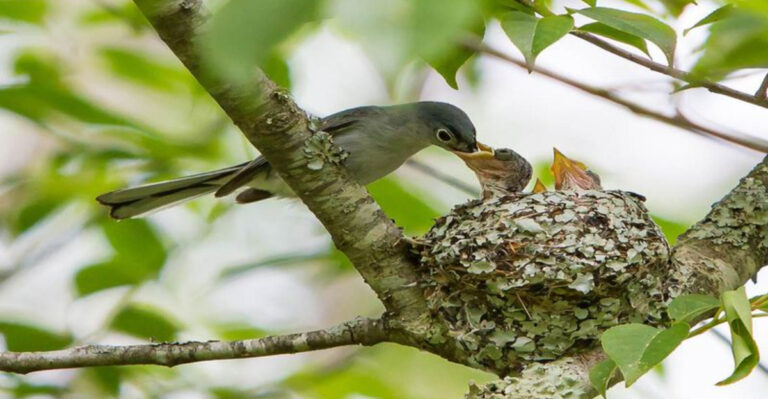Venomous Caterpillars You Should Watch Out For In Your Garden
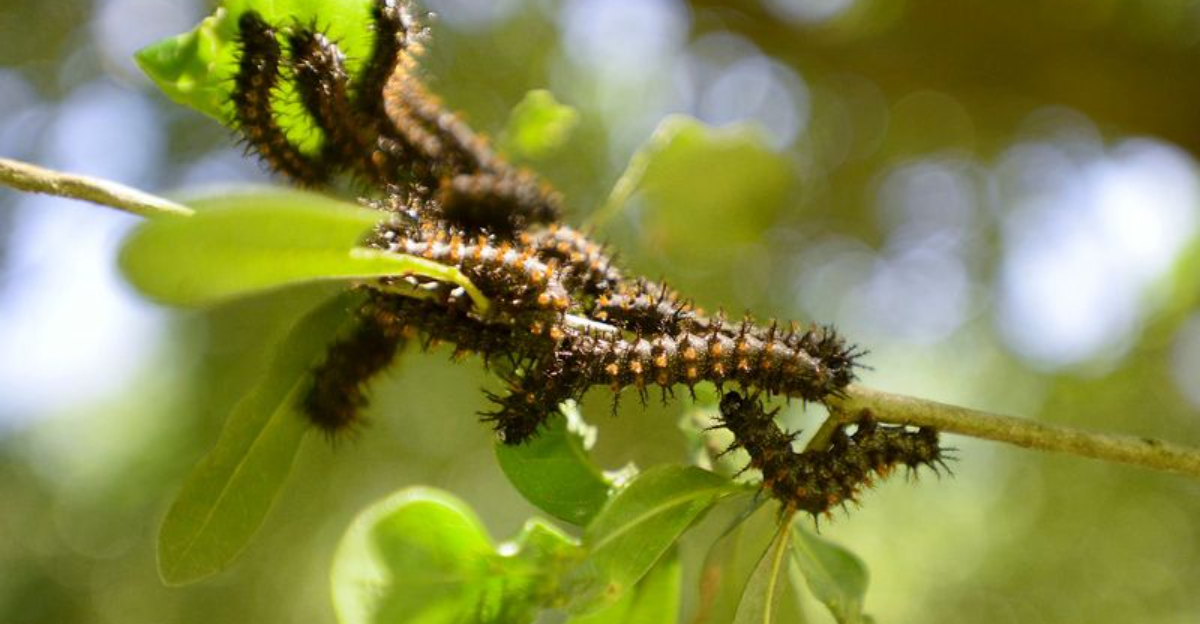
Those fuzzy little creatures crawling around your garden plants might look cute, but some pack a painful punch.
Venomous caterpillars use their spines or hairs to inject toxins that can cause reactions ranging from mild irritation to severe pain requiring medical attention. Knowing which caterpillars to avoid while gardening can save you from an unpleasant encounter with these fascinating but potentially dangerous critters.
1. Saddleback Caterpillar

Ever been sucker-punched by a tiny green saddle? That’s what touching this caterpillar feels like. The saddleback sports a distinctive green “saddle” on its brown body, surrounded by venomous spines.
When brushed against skin, these spines break off and release toxins causing intense pain, swelling, and sometimes nausea. Found munching on various garden plants across eastern North America.
2. Puss Caterpillar (Asp)

Don’t let the cuddly appearance fool you! Looking like a tiny hairpiece that escaped from a dollhouse, the puss caterpillar hides venomous spines under its deceptively soft fur.
Contact causes immediate intense burning pain that can radiate to different body parts. These southern U.S. natives rank among North America’s most venomous caterpillars, sometimes requiring hospital visits after encounters.
3. Io Moth Caterpillar

Lime green with attitude! The io moth caterpillar parades around with rows of branched spines containing venom sacs. These spines break easily upon contact, injecting venom that causes immediate burning pain.
Welts typically appear within minutes and can last for days. Found feasting on roses, dogwoods, and fruit trees, these inch-long troublemakers are common throughout eastern North America.
4. Buck Moth Caterpillar
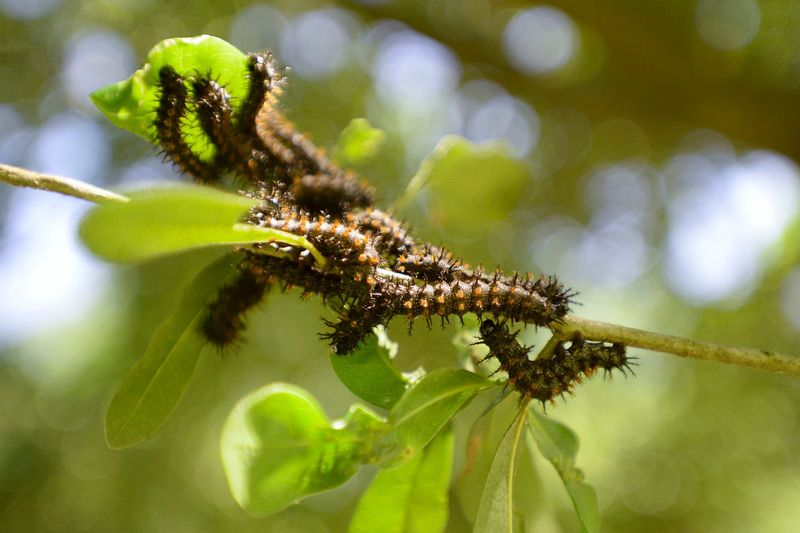
Armed and dangerous describes these black caterpillars with white dots and red-based spines. Buck moth caterpillars travel in groups, increasing your chances of an unwanted encounter.
Their hollow spines inject venom causing immediate stinging, followed by itchy welts that can persist for days. Oak trees are their favorite hangout spots, making them common visitors to gardens with mature trees.
5. Spiny Oak Slug Caterpillar
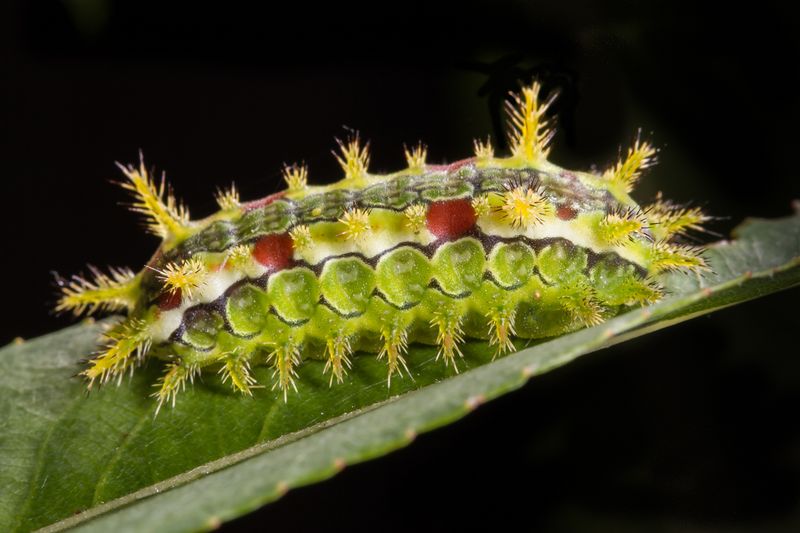
Resembling a tiny alien creature, this bright green oddball features flattened sides and clusters of spines that pack a powerful punch. The spines inject venom causing an immediate burning sensation followed by redness and swelling.
Despite their name, these caterpillars enjoy more than just oak trees – they’ll happily munch on dogwoods, willows, and other garden favorites. Their distinctive appearance makes them easy to spot.
6. Hag Caterpillar
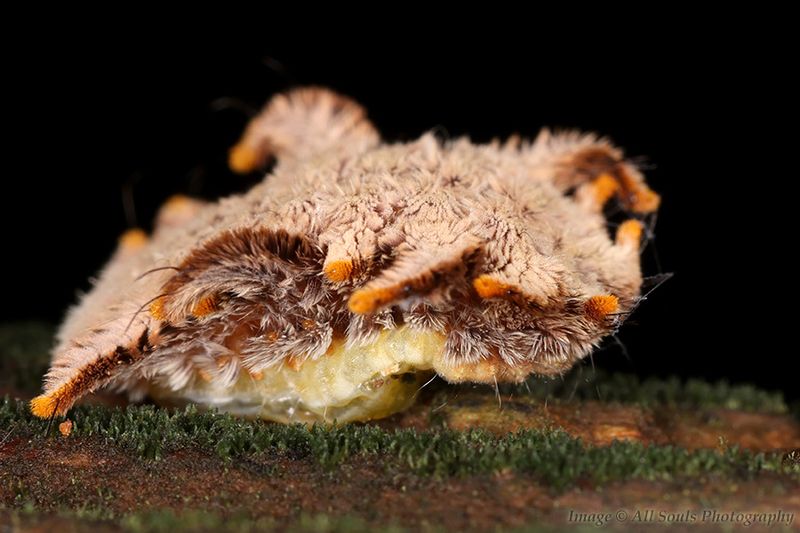
Fantasy creatures come to life! With their bizarre appearance featuring fleshy, hair-covered appendages extending from their bodies, hag caterpillars seem straight out of a fairy tale. Don’t be fooled by their strange beauty.
Hidden among those weird appendages are venomous spines that cause intense burning and inflammation. These unusual caterpillars prefer deciduous trees and shrubs common in residential gardens.
7. White Flannel Moth Caterpillar

Fluffy as a cotton ball but dangerous as a jellyfish! White flannel moth caterpillars have dense white hair covering venomous spines. Their innocent appearance belies their potent sting.
Reactions range from localized pain to fever and nausea in sensitive individuals. Common in southeastern states, they enjoy munching on various trees and shrubs. Their bright white coloration makes them stand out against green foliage.
8. Stinging Rose Caterpillar
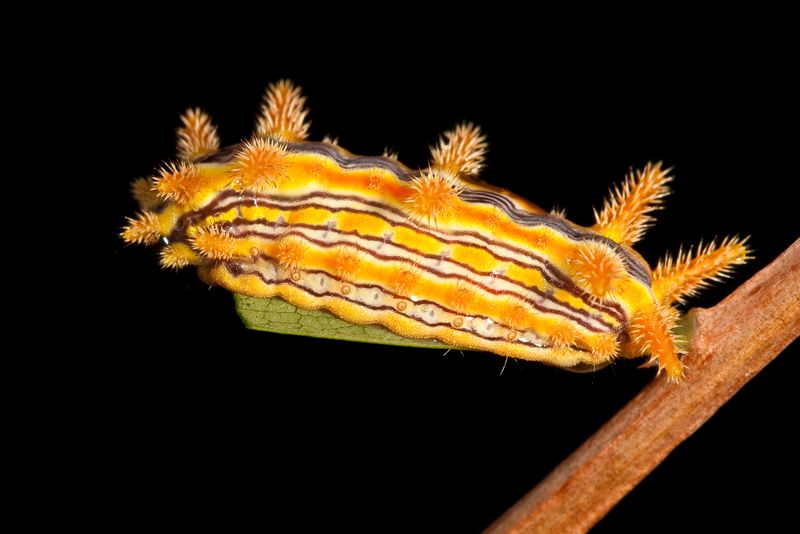
Garden roses hide more than just thorns! The stinging rose caterpillar boasts vibrant yellow, red, and purple coloration with rows of venomous spines along its back. These spines deliver a painful sting when touched.
Found primarily on rose bushes, apple trees, and other garden favorites, they’re most active during summer months. Their bright coloration serves as a warning – nature’s way of saying “look but don’t touch!”
9. Tussock Moth Caterpillar

Sporting a punk rock hairstyle with tufts of hair and long pencil-like projections, tussock moth caterpillars catch the eye immediately. Their colorful hairs contain irritating barbs that cause skin rashes and intense itching.
Unlike some caterpillars that deliver immediate pain, tussock reactions often develop hours after contact. Common in gardens nationwide, they feast on over 120 different plant species including many popular ornamentals.



